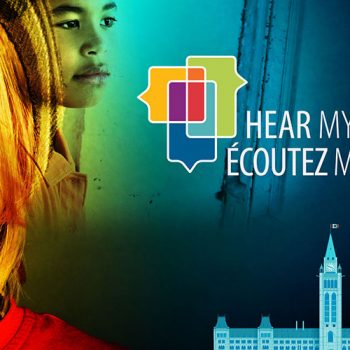How can the teacher voice be heard in the 2015 federal election?
On April 21, Parliament Hill was abuzz with meetings involving teacher leaders and federal officials discussing child and youth mental health, and child poverty in Canada. The CTF Board of Directors’ annual “Hill Day” focussed on federal action and had Board members from across Canada meeting with their respective provincial/territorial federal party caucuses. At the same time, the CTF Executive Committee, led by President Dianne Woloschuk, met with NDP leader Thomas Mulcair, Liberal Leader Justin Trudeau, and Green Party Leader Elizabeth May. Although a few Conservative MPs did meet separately with CTF Board members, Conservative party leader Stephen Harper did not respond to our request. All political parties had been contacted months in advance in preparation for the Hill Day and to obtain each party’s positions regarding child and youth mental health, and child poverty. (Find out more by visiting Our questions. Their replies.)
Child poverty and child and youth mental health were flagged by over 5,000 teachers surveyed by CTF as the two top priorities for advocacy activities in the next federal election. The results from the CTF survey, conducted in September 2014 showed that 95% of teachers selected child and youth mental health as the top federal advocacy priority and 93% chose child poverty. (Find out more by visiting Hear My Voice).
These high percentages are symptomatic of classrooms across the country where teachers work daily with students who are facing a multitude of challenges not related to the curriculum.
Mental health and well-being are important factors influencing a student’s ability to succeed in school. However, only 1 out of 5 children who needs mental health services receives them. Too often, wait times for assessment are more than a year because of an insufficient number of school-based mental health professionals, a lack of adequate staff training in dealing with children’s mental illness and a lack of funding for school-based mental health services. We would not accept this lack of service with other illnesses; why should we with mental illness?
Poverty is also another factor that negatively impacts student learning and development. With growing income inequality in Canada, high poverty rates follow suit. According to Campaign 2000, over 19% of children in Canada, 1.3 million, live in poverty.
Federal government inaction and failure to address these issues are having a ripple effect in schools across Canada.
CTF has mounted a national non-partisan advocacy campaign to give teachers a voice in their respective federal ridings. Teachers across the country are being asked to “think federally and act locally.” After all, who better can tell their stories and advocate for children than teachers who work with them every day.
In cooperation with Member organizations, the CTF “Hear My Voice” campaign (nicknamed VOX which is latin for voice) invites every teacher to be heard on issues related to child and youth mental health, and child poverty as we inch our way towards a federal election on Oct. 19, 2015.
While the voice of the CTF Board of Directors was heard at the federal, provincial, and territorial levels, the voices of teachers in their ridings are equally important. Teachers are invited to share their stories with their federal election candidates—online, in person, or by phone—and to seek their commitment to support children and youth in Canada.
CTF’s easy-to-read teacher advocacy toolkit helps teachers walk through the local advocacy process and offers ideas and approaches that can take from one minute to one hour to complete.
Download the 10-page Teacher Advocacy Toolkit (PDF – 1.07 MB)
Read up on the issues along with data (PDF – 4.90 MB)
Do you wish to engage on social media? The campaign hashtags are #CTFVOX and #VOXFCE. And feel free to share/post the social media shareables.
We hope to hear your voices – Let’s make Canada’s children and youth a top priority in the next Parliament.






